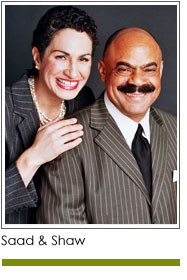 Let’s be honest. Do you really know why your nonprofit is running a “capital campaign?” Does your institution have specific capital needs such as buildings or equipment that it needs to invest in? Could it be your nonprofit is really running a “we need a lot of money campaign” or an “everyone else has done it” campaign?
Let’s be honest. Do you really know why your nonprofit is running a “capital campaign?” Does your institution have specific capital needs such as buildings or equipment that it needs to invest in? Could it be your nonprofit is really running a “we need a lot of money campaign” or an “everyone else has done it” campaign?
Here’s what we’ve learned. The most well-intentioned of people are often afraid to question the assumptions underlying a capital campaign. While many of us have a strong drive to “save face,” that urge can put the organizations and institutions we believe in at risk. Our advice: Don’t be afraid to ask questions. Here are a three to consider.
Have there been conversations at the board level with reports from the finance committee on the costs, variables, timeframes, and projected impact? Is there a budget to support the operations of the campaign, or will staffing, marketing, technology, events, and consultants be paid for “as the money comes in.”
Is your executive director – or college president – seeking to leave a legacy by launching a capital campaign? Our question – will she or he launch a campaign or successfully complete the campaign? There is a slight difference, one that usually reveals itself when the books are presented to the incoming executive.
How exactly are you counting the money? Is your institution counting progress towards its building campaign with annual gifts that were spent last year? You know our question: who can spend a dollar twice? Don’t be afraid to question the numbers or ask for a detailed report instead of a summary report.
Here are some cues you need to start asking questions:
The board is being asked to approve borrowing money that will be paid back with funds from the capital campaign. Your organization is unable to meet its annual fundraising goal. There is no pool of current or prospective major donors. The board is being asked to approve a campaign in spite of a feasibility study that recommends against doing so because of a lack of identified donors, capacity, infrastructure, resources and leadership. The board is not a fundraising board, fundraising staff is minimal and turns over regularly. Your questions are answered with statements such as “we can’t afford the time it will take to conduct a feasibility study, develop a case, recruit volunteer leadership... [fill in the blank]....” Another dangerous response: “I feel we can do it... we just have to step outside our comfort zone.”
We have seen churches, colleges, and community-based nonprofits plunge into capital campaigns only to awaken years later as if from a nightmare.
That doesn’t have to be the fate of your nonprofit: ask questions, and then ask some more.
Copyright 2015– Mel and Pearl Shaw
Mel and Pearl Shaw position nonprofits, colleges and universities for fundraising success. For help with your fundraising visit www.saadandshaw.com or call (901) 522-8727.











